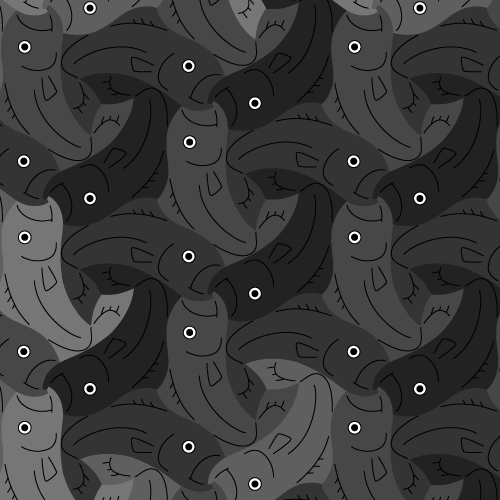Robert Bosch, Robert Fathauer and Andrew Pike
Robert Bosch, Professor of Mathematics
Robert and Eleanor Biggs Professor of Natural Science, Department of Mathematics, Oberlin College
Founder of
http://www.dominoartwork.com
"I specialize in "Opt Art", the use of mathematical optimization techniques
to create pictures, portraits, and sculpture. I have used integer programming
to create portraits out of complete sets of dominoes, linear programming to
create pointillistic pieces, and instances of the Traveling Salesman Problem
to create continuous line drawings. What all my pieces have in common---aside
from how they were constructed---is that they look very different up close than
they do from afar. I create my artwork out of a love of optimization---the theory,
the algorithms, its numerous applications. I believe that optimization can be
applied to virtually every imaginable field, and I believe that my artwork does
a good job of helping me make that point."
Robert Fathauer, Small business owner, puzzle designer, and artist, Tessellations Company
Robert Fathauer makes limited-edition prints inspired by tiling, fractals,
and knots. He employs mathematics in his art to express his fascination with
certain aspects of our world, such as symmetry, complexity, chaos, and infinity.
His artworks are created on a Macintosh computer, primarily using the commercial
programs FreeHand and Photoshop. More recently, he has been exploring fractal
arrangements of polyhedra.
Andrew Pike, Student (Senior, majoring in Mathematics and Biology and
minoring in Computer Science and Religion), Oberlin College
"I am new to the game of mathematical art. Currently I am a senior at
Oberlin College studying how mathematical optimization techniques can be
used to create pieces of visual artwork. My supervisor is Robert Bosch,
known for his "Opt Art", including Domino Art and TSP Art. I am
fascinated by the way the human brain is able to blend the separate
pieces of a mosaic into one cohesive picture. "
“ Escher Fish Portrait ”
2008, Digital print, 24" by 31.5"
“ Escher Fish Portrait - Detail ”

This piece is a collaboration of Robert Bosch, Robert Fathauer, and Andrew Pike. It is done in homage to M.C. Escher. Up close, the viewer sees an Escher-like fish tessellation designed by Robert Fathauer. No two fish that touch are the same shade of gray. From a distance, the fish form the image of a well-known self portrait of Escher.